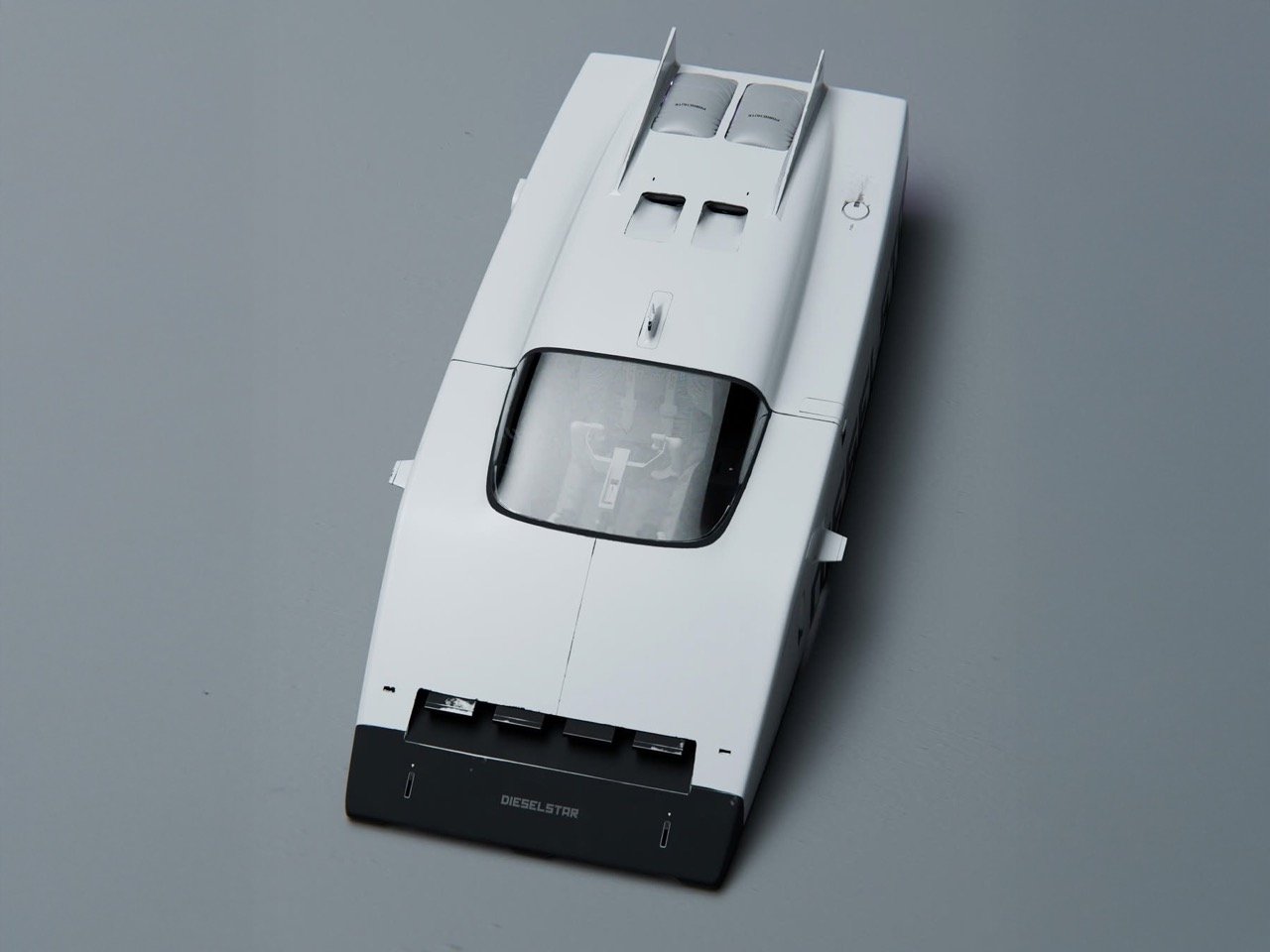Blade Runner meets Bonneville. Godwin Smith’s DIESELSTAR concept slams that wedge-shaped ethos from the 1970s into a dystopian future, where speed isn’t just a thrill but a design philosophy. This car looks like it was extruded from a block of aluminum by a machine with zero patience for curves. The cockpit is a slit, the wheels are half-hidden, and the rear end exposes its mechanical guts like a challenge. It’s a land-bound projectile, built for straight-line domination and nothing else.
The DIESELSTAR’s silhouette is pure Marcello Gandini if he’d been fed a steady diet of cyberpunk anime and land speed record lore. The Stratos Zero’s wedge is there, but Smith cranks it up, stripping away even the slightest hint of organic shaping. What’s left is a machine that looks like it belongs in a world where aesthetics are dictated by function, where every panel and seam exists to cheat the wind or house something mechanical. The cockpit is little more than a slit in the bodywork, the wheels are half-swallowed by the chassis, and the rear end exposes its guts like a statement of intent. This thing doesn’t just look fast. It looks like it was reverse-engineered from a speed record.
Designers: Godwin Smith, Nicolas Studio & Thomas Fred
The DIESELSTAR sits low, really low, with a roof height that wouldn’t embarrass a Formula 1 car. The width is exaggerated, stretching out like it’s permanently bracing for a high-speed corner, even though we all know this thing is built for dead-straight supremacy. The overhangs are minimal, almost nonexistent, which pushes the wheels to the absolute corners and amplifies that planted, ready-to-pounce stance. And then there’s the length, which feels stretched just enough to accommodate whatever turbine or electric madness is lurking under that flat, featureless hood. It’s a ratio game, and Smith plays it like a veteran, balancing aggression with an almost architectural sense of scale.
The details are where the DIESELSTAR stops being a retro-futurist fantasy and starts feeling like a plausible machine. Take the lighting, for example. Up front, there’s a row of thin, rectangular LEDs embedded into a black panel, a design choice that’s equal parts minimalist and menacing. Out back, the taillights are two razor-thin purple strips that look like they were lifted straight from a synthwave album cover. They’re not just there to look cool, though. The positioning and shape suggest they double as aerodynamic elements, guiding airflow around the rear wheels. Even the “DIESELSTAR” typography, stenciled along the side in blocky, no-nonsense letters, feels like it was chosen for its ability to disrupt airflow as little as possible. This is a car where every millimeter counts.
Then there’s the exposed rear mechanics, a detail that’s equal parts functional and theatrical. It’s a callback to the golden age of land speed cars, where engines and drivetrains were often left bare, partly out of necessity and partly as a middle finger to convention. Here, it serves as a reminder that this isn’t a production car meant to coddle its occupants. It’s a prototype, a testbed, a machine built to push limits and then shatter them. The visible suspension components and drive shafts aren’t just for show; they’re a declaration that this car is more about engineering prowess than passenger comfort. You don’t climb into the DIESELSTAR. You strap in and hold on.
Of course, the elephant in the room is whether something like this could ever exist outside of a render. The answer is complicated. The DIESELSTAR’s design is extreme, but not impossible. The lack of traditional grilles or air intakes suggests an electric or turbine-powered drivetrain, which aligns with the current push toward alternative propulsion in high-performance machines. The aerodynamic purity of the shape would make it a nightmare for city driving but a dream on a high-speed run. And while the exposed mechanics might raise eyebrows in a production car, they’re not out of place in a prototype or a one-off land speed challenger. If anything, the DIESELSTAR feels like a dare, a challenge to the automotive world to stop playing it safe and start building machines that look like they’re from the future again.
The post This Futuristic Car Design Looks Like It Escaped From a Cyberpunk Movie first appeared on Yanko Design.

